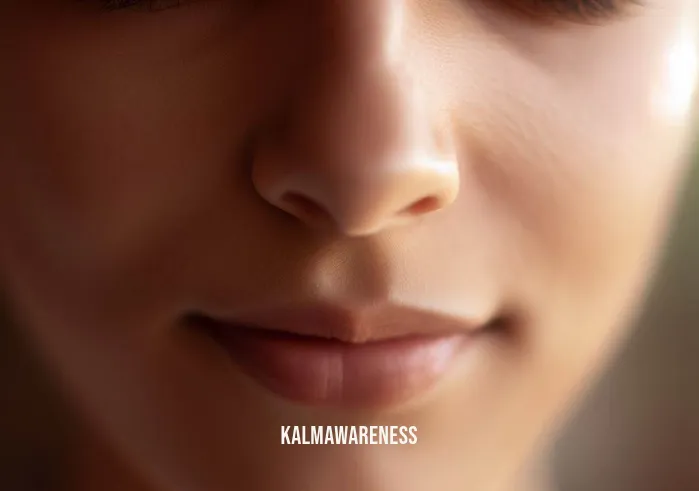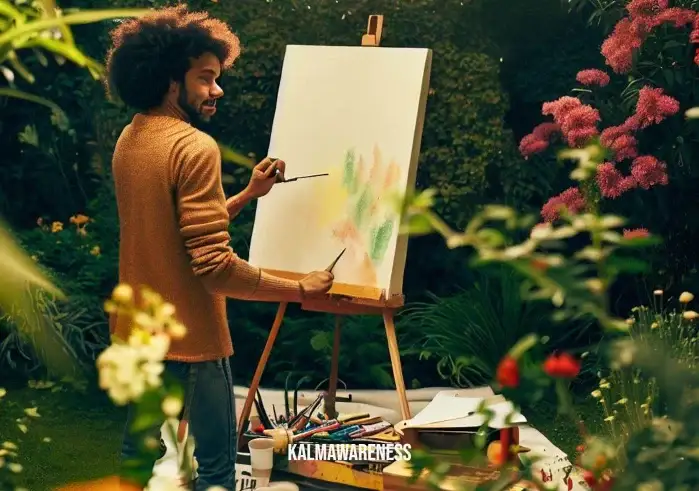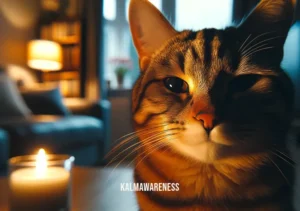Exploring Do Nothing Meditation: A Paradigm Shift in Mindfulness Practices
Do nothing meditation is a simple yet profound approach to cultivating presence and stillness. Unlike traditional methods of meditation that involve focus, visualization, or the repetition of mantras, this practice encourages you to let go and just be. Though it might sound counterintuitive, doing nothing can, in fact, yield significant benefits for your mind, body, and spirit. In this essay segment, we’ll delve into the history, mechanics, and benefits of do nothing meditation.
The History and Origins of Do Nothing Meditation
When people think of meditation, the first image that comes to mind is usually one of rigorous discipline—seated postures, deep breathing, and perhaps even elaborate rituals. In contrast, do nothing meditation is a minimalist’s dream. It finds its roots in various Eastern philosophies, particularly in Zen Buddhism. Zen meditation or Zazen involves just sitting and breathing without any particular object of meditation. This non-action is considered an action in itself, a way to fully embrace the present moment.
“In stillness, the world resets itself.”
In Western cultures, the practice can be seen as an antithesis to our busy lives, a form of sustainable self-care that anyone can adopt regardless of their background or beliefs.
What Does It Involve?
At the core of do nothing meditation is a focus on attaining a peaceful state of mind in which thoughts are not occupied by worry. It does not require any specific posture, and yes, you can even meditate lying down. The idea is to remove any mental clutter, which is typically the byproduct of our busy lives filled with endless tasks, worries, and distractions. In this form of meditation, you simply let your mind wander without judgment, much like the judgment of the wise, which observes without categorizing good or bad.
Techniques
- Sit or Lie Down: Find a comfortable position that allows you to relax completely.
- Breathe Normally: There’s no need to engage in special breathing or mindful movement techniques designed for sleep or relaxation.
- Let Go: Release any tension in your body and mind, allowing thoughts to come and go without engaging them.
In essence, this is an element of some meditation exercises that is distilled into a singular practice focused on unadulterated relaxation and presence.
Benefits for Mind and Body
Do nothing meditation is not just about mental tranquility; it also has tangible physical benefits. It aids in relaxation, reduces stress hormones, and can even help stabilize your emotional and psychological state.
Enhanced Mindfulness: By doing nothing, you’re actually training yourself to be in the moment. This increases your overall level of mindfulness and helps you be happy now, irrespective of external circumstances.
Better Sleep: By letting go of the mental noise, you pave the way for a better quality of sleep, a natural remedy far more effective than any medication or EMDR meditation techniques.
Improved Mental Health: This practice can serve as an excellent supplement to other therapeutic methods, whether it’s Rouse yoga for emotional liberation or mindful hypnobirthing for expectant mothers.
Holistic Self-Care: In a world driven by productivity and hustle, taking time to do nothing is a revolutionary act of self-care that is both sustainable and rejuvenating.
A Journey Towards Stillness
The beauty of do nothing meditation is that it’s accessible to everyone. You don’t need to be an expert in Jack Kornfield’s meditation for beginners to embark on this enriching journey. It serves as a foundation upon which you can build other mindfulness practices, whether it’s a focus on breathing and meditation, or incorporating it into everyday activities like walking, especially beneficial for teenagers.
As we continue exploring this topic in the next segment, we’ll delve deeper into how to integrate do nothing meditation into your daily routine, even if you’re a complete beginner. We’ll also look at how this practice aligns with other mindfulness techniques and philosophies.
Stay with us to learn more about this transformative practice.

Deepening Your Practice: The Nuances of Do Nothing Meditation
Having delved into the basics and foundational elements of do nothing meditation, let’s shift our attention to understanding its complexities and the subtleties that can significantly impact your practice. We’ll explore the importance of different facets such as intention, setting, and frequency. In addition, we’ll offer a comparative table to guide you on how do nothing meditation stacks up against other methods.
Setting the Intention: More Than “Pretty Soon”
It’s a common misconception that because the practice involves “doing nothing,” there’s no need for intentionality. However, if you approach your meditation without a clear purpose, you may find yourself struggling with doubts or distractions. The importance of setting an intention for your meditation cannot be understated. Take a few moments to center yourself, perhaps even stating aloud your purpose for this meditation session. Understand that while the aim is to do nothing, this does not equate to an absence of intention or preparation. You’re making time for yourself, and pretty soon, this intentionality will pay off in forms of greater relaxation, presence, and mindfulness.
Selecting Your Setting: Any Time, Any Place
In traditional forms of meditation, setting can be a significant factor. Do nothing meditation, however, offers a liberating level of flexibility. Whether it’s a Buddhist temple in Kansas City or your living room, the choice is yours. What matters more is that you feel comfortable and free from interruptions.
Things to Keep in Mind for the Perfect Setting
Solitude: Ensure you’re alone or at least won’t be disturbed.
Comfort: Opt for cushioned or soft surfaces when possible.
Temperature: Maintain a comfortable room temperature for optimum relaxation.
Soundscapes: While not necessary, soft background sounds like water or wind can enhance your experience.
Frequency and Duration: Consistency Over Intensity
While it’s important to keep in mind that do nothing meditation is flexible, maintaining a consistent practice is the key to harvesting its long-term benefits. It’s less about the intensity or duration and more about the frequency. Even if it’s for a few minutes every day, the idea is to make it a part of your daily routine.
How Do Nothing Meditation Compares to Other Methods
| Method | Main Focus | Intensity | Special Requirements |
|---|---|---|---|
| Do Nothing Meditation | Presence and Relaxation | Low | None |
| Rouse Yoga | Emotional Liberation | Moderate to High | Yoga Mat, Specific Postures |
| Mindful Hypnobirthing | Ease of Childbirth | Moderate | Instructor-led, Specific Techniques |
| Touch That Body Part Meditation | Physical Awareness | Low to Moderate | None |
| EMDR Meditation | Trauma Healing | High | Therapist Supervision |
Moving Beyond Physical Constraints: “I Am Not the Body, I Am Not Even the Mind”
As we go deeper into the intricacies of do nothing meditation, it’s essential to understand that it’s not just a physical practice but a mental and spiritual one as well. This meditation technique allows you to move beyond the identification with your physical form and thought patterns. By simply being, you embrace the idea that “I am not the body, I am not even the mind”, creating a space where true inner peace resides.
What’s Next: A Closer Look at Do Nothing Meditation
Now that we’ve delved deeper into do nothing meditation, covering its nuances and how it compares with other practices, we’re ready to take your understanding to the next level. In the next segment, we’ll explore advanced strategies to overcome challenges in your practice, including common misconceptions and how to tackle them.
We’ll also explore how to align this practice with other mindfulness techniques, making your journey towards relaxation and presence even more rewarding. So stay with us as we continue to explore this fascinating realm of self-discovery and inner peace.
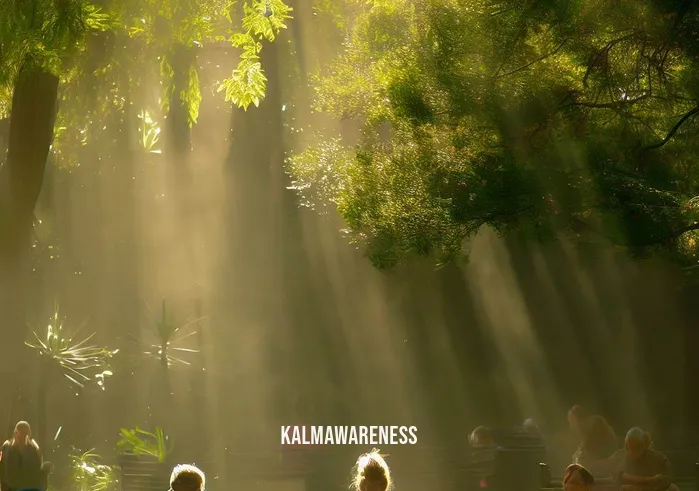
The Heart of Silence: Finding Hope and Inspiration in Do Nothing Meditation
As we journey deeper into the landscape of do nothing meditation, it becomes evident that this isn’t merely an exercise in stillness; it’s an exploration of potential—yours, mine, and that of human consciousness. This chapter is designed to spark your hope and inspire you, not only to continue this practice but to also discover its profound implications for your life.
The Wisdom of Simply Being: “Be Here Now”
Ram Dass famously said, “Be here now.” This phrase encapsulates the essence of do nothing meditation, which is also rooted in presence and mindfulness. The simplicity of being present can offer profound wisdom and peace, serving as an antidote to modern life’s constant hustle and distractions. A deep dive into presence has the potential to make you happy right now.
“The best way to capture moments is to pay attention. This is how we cultivate mindfulness.” – Jon Kabat-Zinn
Sustainable Self-Care: An Everyday Oasis of Calm
In a world that continually pushes for more—more productivity, more connections, more experiences—it’s easy to forget the value of simplicity. This form of meditation offers a sustainable approach to self-care, standing in contrast to fleeting wellness trends.
“Caring for myself is not self-indulgence, it is self-preservation, and that is an act of political warfare.” – Audre Lorde
A Symphony in Stillness: The Vibrational Resonance
As you practice do nothing meditation, you might find yourself more attuned to life’s subtleties. Sounds, colors, and even your own thoughts can take on a richer quality. Some practitioners find that this form of meditation harmonizes with particular frequencies, aligning with the benefits of 256 Hz.
“Stillness is where creativity and solutions to problems are found.” – Eckhart Tolle
The Depths of Simplicity: How We Get Deep So Fast
The irony of do nothing meditation is that by committing to the simple act of being, you quickly find yourself plunging into profound depths of understanding and peace. This almost paradoxical experience can create an extraordinary state of mind in which your thoughts are not occupied by worry.
“In stillness, the world resets.” – Unknown
Inspiring Others: The Ripple Effect
The inspiration you gain from this meditative practice has a ripple effect, influencing not just your own life but also the lives of those around you. When you’re grounded, you become a cornerstone for others, much like a guidepost offering wisdom from a place of judgment free awareness.
“Be the change you want to see in the world.” – Mahatma Gandhi
Unlocking the Next Level: What’s Coming Up
Feeling inspired and hopeful about your do nothing meditation journey? Good, because in the next chapter, we’ll delve into troubleshooting this practice. From overcoming common challenges to tweaking your sessions for optimum results, the upcoming content is designed to ensure your continued growth and deepening peace.
This will include different approaches for different lifestyles, whether you’re a busy teenager or someone interested in beginner-friendly guided meditation. Rest assured, whatever stage you’re at in your meditation journey, there’s something valuable for you in what’s to come. So, please continue reading as we unlock deeper aspects of this fascinating practice.

Unpacking the Essence: A Comprehensive Guide to Do Nothing Meditation
The enchanting power of do nothing meditation lies in its simplicity, yet within that simplicity, numerous facets warrant deeper exploration. This chapter aims to peel back the layers, breaking down the complexities that can be found in this straightforward practice. By understanding the multiple dimensions and the mechanics, you can enrich your experience and deepen your connection to stillness and relaxation.
The Anatomy of Stillness
It might seem counterintuitive to talk about “anatomy” when discussing a practice centered on doing nothing. However, even inactivity has its structure, and in the realm of mindfulness and presence, understanding this architecture can be enlightening.
- The Physical Element: Tuning into bodily sensations can be a doorway into a deeper sense of presence. This is often an element of some meditation exercises, including do nothing meditation.
- The Mind Layer: The practice can help you cultivate a state where you keep in mind the definition of a calm mind, one free of clutter and stress.
- Emotional Equilibrium: Doing nothing doesn’t mean suppressing your feelings; it means being aware of them without judgment.
- Time Dimension: The longer you practice, the more you might notice time altering its pace. Sometimes it may slow down; other times, it might feel non-existent.
The Questions We Don’t Ask
In do nothing meditation, the questions are as important as the answers. Here are some inquiries that often arise:
- Is Movement Allowed?: A common query in mindfulness is related to mindful movement. The key is to be aware, whether in stillness or in motion.
- Can I Do it Lying Down?: While traditional forms of meditation might emphasize posture, this approach has a more flexible viewpoint. You can even meditate lying down.
- How Do I Know I’m Doing it Right?: The wise don’t judge, and in this form of meditation, neither should you. The practice itself is the guide.
Debunking Common Myths
There’s a lot of misinformation floating around meditation in general, so let’s address some common myths:
- It’s All in the Mind: While mental presence is crucial, the body plays a part too. Your whole being is involved.
- It’s About “Not Thinking”: The goal is not to eliminate thoughts but to stabilize your attention so that thoughts lose their distracting power.
Adding Layers to Your Practice
As you deepen your connection with this form of stillness, you might feel drawn to complement it with other techniques:
- EMDR for Trauma: If you’re dealing with past traumas, incorporating EMDR meditation can be beneficial.
- Yoga for Physicality: A touch of rouse yoga can accentuate your physical awareness.
Anticipating the Conclusion: Where Do We Go From Here?
If you’ve made it this far, you’re undoubtedly serious about mastering the art of do nothing meditation. However, even the most straightforward paths can have unexpected turns. In the next chapter, we will bring everything together, providing you with a roadmap to maintain and grow your practice over the long term. Whether you’re looking to further your journey into mindfulness or seeking to understand the more profound philosophical implications like “I am not the body; I am not even the mind”, the final chapter aims to be your go-to resource. So, let’s forge ahead and see what revelations the concluding chapter holds.
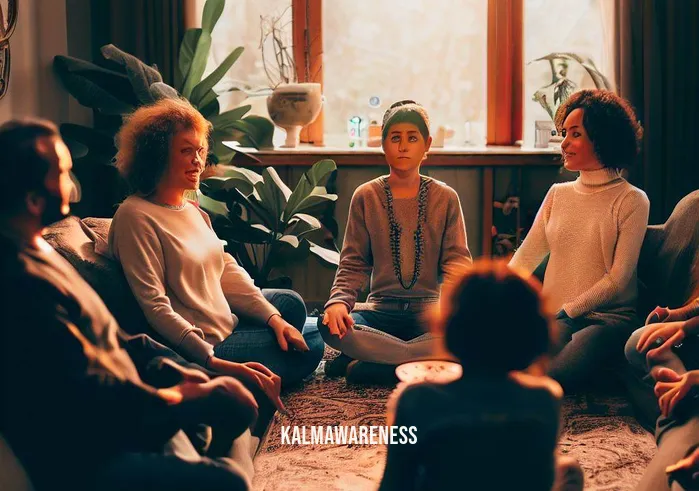
The Gentle Farewell: Completing Our Journey through Do Nothing Meditation
As our exploration of do nothing meditation winds down, it’s a fitting moment to pause and reflect on the ground we’ve covered. This final chapter won’t be a mere recap, though. Instead, consider it a refreshing glimpse back at the stillness we’ve investigated and a forward gaze toward the serenity that awaits us.
The Symphony of Stillness and Silence
Do you recall the first chapter where we set the stage for this timeless practice? We have come a long way from understanding its rudimentary components to diving deep into its anatomy and finally incorporating inspiring wisdom. The practice has unfolded much like a complex yet harmonious symphony, each note of stillness and silence resonating perfectly with the next.
The Significance of “Doing Nothing”
As we’ve seen, doing nothing isn’t about idleness but a conscious practice of letting go. This can help us in attaining a peaceful state of mind, where thoughts are not occupied by worry. “Doing nothing” could be the gateway to mindful freedom, a realm where you’re in complete control by relinquishing control.
Nuggets of Wisdom Gained
What are the key insights from our journey? Let’s take a moment to reflect.
An In-Depth Understanding: Do nothing meditation is not just about being still; it’s about understanding the facets of that stillness.
Versatility: This practice allows you to be you, whether you’re walking as a teenager or pondering the deeper implications of being happy now.
Freedom: We’ve dispelled myths and misinterpretations, liberating the practice from unnecessary complexities.
Your Next Steps: A Heartfelt Invitation
If the practice of do nothing meditation has resonated with you, why stop here? Our magazine is brimming with a plethora of additional resources that you’ll find beneficial. For instance, you can learn about sustainable self-care, which dovetails perfectly with the themes of mindful relaxation we’ve explored.
The Last Word: A Note of Gratitude
Let’s end on a light-hearted and grateful note. Thank you for joining us on this enriching journey. The art of do nothing meditation can appear deceptively simple, but as we’ve seen, it has far-reaching implications for our well-being and mental health. We hope you continue to explore this and other mindful practices, perhaps visiting a Buddhist temple in Kansas City or tuning into the healing frequencies of 256 Hz.
Ready for More?
As you delve further into this intriguing practice, remember that this is just the beginning. Feel free to revisit previous chapters to solidify your understanding, and stay tuned for future editions where we will continue to explore the depths of mindfulness, meditation, and holistic wellness.
May your journey into the realm of doing nothing lead you to the everything that you’ve been searching for. Namaste.
